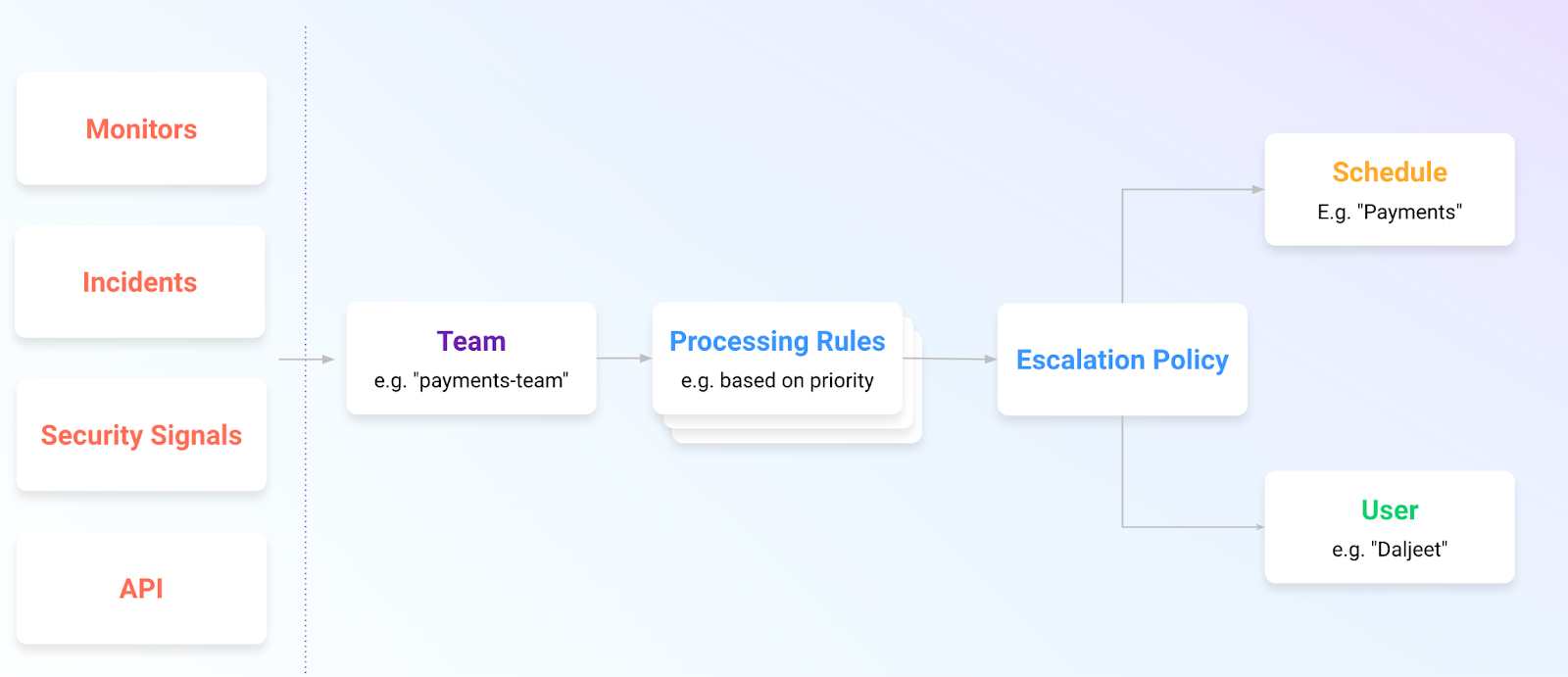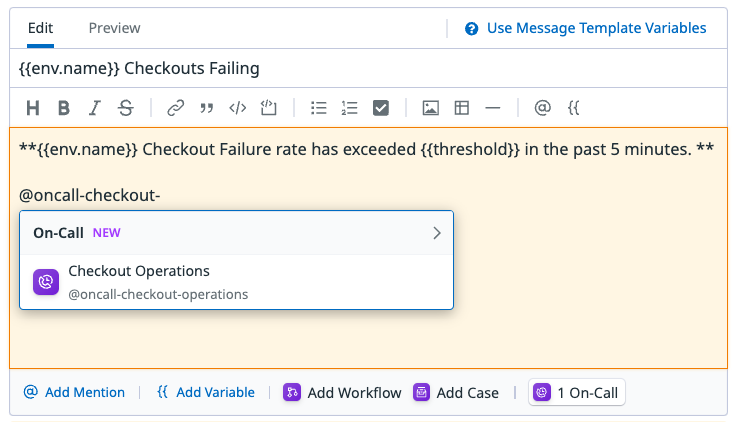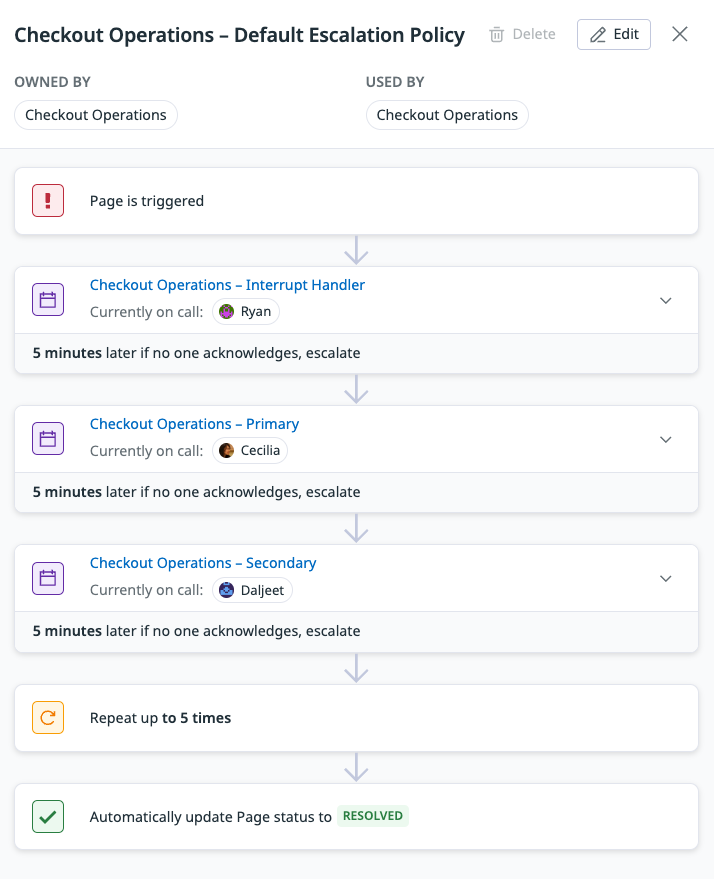- Principales informations
- Getting Started
- Agent
- API
- Tracing
- Conteneurs
- Dashboards
- Database Monitoring
- Datadog
- Site Datadog
- DevSecOps
- Incident Management
- Intégrations
- Internal Developer Portal
- Logs
- Monitors
- OpenTelemetry
- Profileur
- Session Replay
- Security
- Serverless for AWS Lambda
- Software Delivery
- Surveillance Synthetic
- Tags
- Workflow Automation
- Learning Center
- Support
- Glossary
- Standard Attributes
- Guides
- Agent
- Intégrations
- Développeurs
- OpenTelemetry
- Administrator's Guide
- API
- Partners
- Application mobile
- DDSQL Reference
- CoScreen
- CoTerm
- Remote Configuration
- Cloudcraft
- In The App
- Dashboards
- Notebooks
- DDSQL Editor
- Reference Tables
- Sheets
- Alertes
- Watchdog
- Métriques
- Bits AI
- Internal Developer Portal
- Error Tracking
- Change Tracking
- Service Management
- Actions & Remediations
- Infrastructure
- Cloudcraft
- Resource Catalog
- Universal Service Monitoring
- Hosts
- Conteneurs
- Processes
- Sans serveur
- Surveillance réseau
- Cloud Cost
- Application Performance
- APM
- Termes et concepts de l'APM
- Sending Traces to Datadog
- APM Metrics Collection
- Trace Pipeline Configuration
- Connect Traces with Other Telemetry
- Trace Explorer
- Recommendations
- Code Origin for Spans
- Observabilité des services
- Endpoint Observability
- Dynamic Instrumentation
- Live Debugger
- Suivi des erreurs
- Sécurité des données
- Guides
- Dépannage
- Profileur en continu
- Database Monitoring
- Agent Integration Overhead
- Setup Architectures
- Configuration de Postgres
- Configuration de MySQL
- Configuration de SQL Server
- Setting Up Oracle
- Setting Up Amazon DocumentDB
- Setting Up MongoDB
- Connecting DBM and Traces
- Données collectées
- Exploring Database Hosts
- Explorer les métriques de requête
- Explorer des échantillons de requêtes
- Exploring Database Schemas
- Exploring Recommendations
- Dépannage
- Guides
- Data Streams Monitoring
- Data Jobs Monitoring
- Data Observability
- Digital Experience
- RUM et Session Replay
- Surveillance Synthetic
- Continuous Testing
- Product Analytics
- Software Delivery
- CI Visibility
- CD Visibility
- Deployment Gates
- Test Visibility
- Code Coverage
- Quality Gates
- DORA Metrics
- Feature Flags
- Securité
- Security Overview
- Cloud SIEM
- Code Security
- Cloud Security Management
- Application Security Management
- Workload Protection
- Sensitive Data Scanner
- AI Observability
- Log Management
- Pipelines d'observabilité
- Log Management
- CloudPrem
- Administration
On-Call
Ce produit n'est pas pris en charge par le site Datadog que vous avez sélectionné. ().
Cette page n'est pas encore disponible en français, sa traduction est en cours.
Si vous avez des questions ou des retours sur notre projet de traduction actuel, n'hésitez pas à nous contacter.
Si vous avez des questions ou des retours sur notre projet de traduction actuel, n'hésitez pas à nous contacter.
Datadog On-Call integrates monitoring, paging, and incident response into one platform.
Concepts
- Pages represent something to get alerted for, such as a monitor, incident, or security signal. A Page can have a status of
Triggered,Acknowledged, orResolved. - Teams are groups configured within Datadog to handle specific types of Pages, based on expertise and operational roles.
- Routing rules allow Teams to finely adjust their reactions to specific types of incoming events. These rules can set a Page’s urgency level and route Pages to different escalation policies depending on the event’s metadata.
- Escalation policies determine how Pages are escalated within or across Teams.
- Schedules set timetables for when specific Team members are on-call to respond to Pages.
How it works
Teams are the central organizational unit of Datadog On-Call. When a notification is triggered in Datadog, a Page is sent to the designated On-Call Team.
Each Team owns escalation policies and schedules. Escalation policies define how a Page is sent to various schedules, such as Checkout Operations - Interrupt Handler, Primary, and Secondary in the following screenshot. Each Team can also configure routing rules to route Pages to different escalation policies.
A schedule defines specific times when Team members are assigned to respond to Pages. Schedules organize and manage the availability of Team members across different time zones and shifts.
Granular access control
Use granular access controls to limit the roles, teams, or users that can access On-Call resources. By default, access to On-Call schedules, escalation policies, and team routing rules is unrestricted.
Granular access controls are available for the following On-Call resources:
- Schedules: Control who can view, edit, and override schedules
- Escalation policies: Control who can view and edit escalation policies
- Team routing rules: Control who can view and edit team routing rules
Supported resources and permissions
| On-Call resource | Viewer | Overrider | Editor |
|---|---|---|---|
| Schedules | Can view schedules | Can view schedules and override shifts | Can view, edit schedules, and override shifts |
| Escalation policies | Can view escalation policies | - | Can view and edit escalation policies |
| Team routing rules | Can view team rules | - | Can view and edit team rules |
Restrict access to On-Call resources
To restrict access to an On-Call resource:
- Navigate to the specific On-Call resource (schedule, escalation policy, or team routing rules).
- Click Manage.
- Select Permissions from the dropdown menu.
- Click Restrict Access.
- Select one or more roles, teams, or users from the dropdown menu.
- Click Add.
- Select the level of access you want to associate with each of them from the dropdown menu next to their name:
- Viewer: Read-only access to view the resource
- Overrider (schedules only): Can view and create schedule overrides
- Editor: Full access to view and modify the resource
- Click Save.
Note: To maintain your edit access to the resource, Datadog requires you to include at least one role that you are a member of before saving.
Start using Datadog On-Call
To preserve incident history, Datadog On-Call does not support deletion of resources like Pages, escalation policies, or schedules. To test On-Call without affecting your production environment, create a trial organization as a sandbox.
To get started with On-Call, onboard an On-Call Team and ensure that all Team members configure their On-Call profile settings to receive notifications.
This section includes the following topics:
- Onboard a Team: Create a new On-Call Team, add an existing Datadog Team to On-Call, or import a team from PagerDuty.
Billing
On-Call is a seat-based SKU. To learn more about how On-Call is billed and how to manage seats within Datadog, visit our pricing page and the Incident Response billing documentation.
Further Reading
Documentation, liens et articles supplémentaires utiles:




